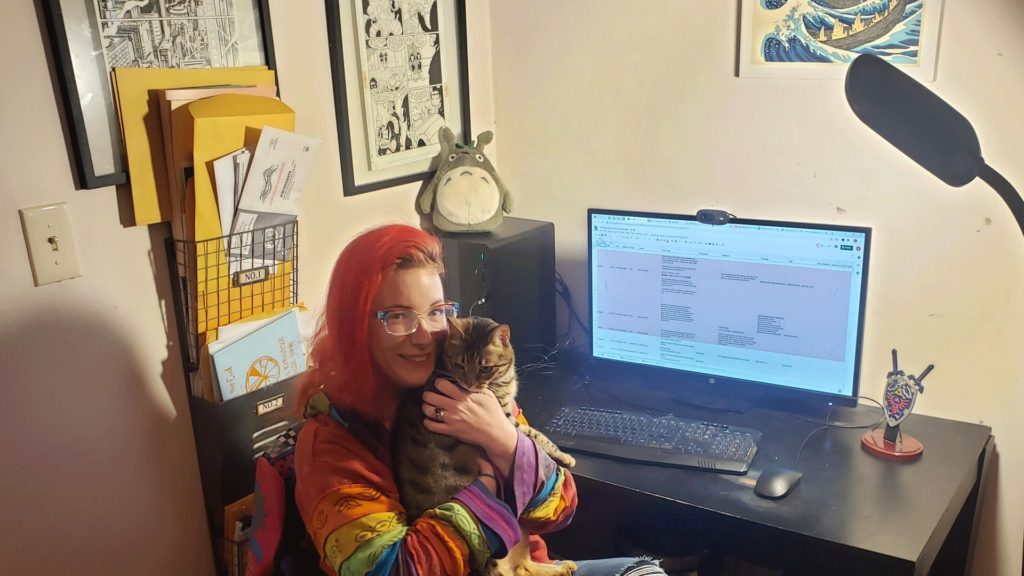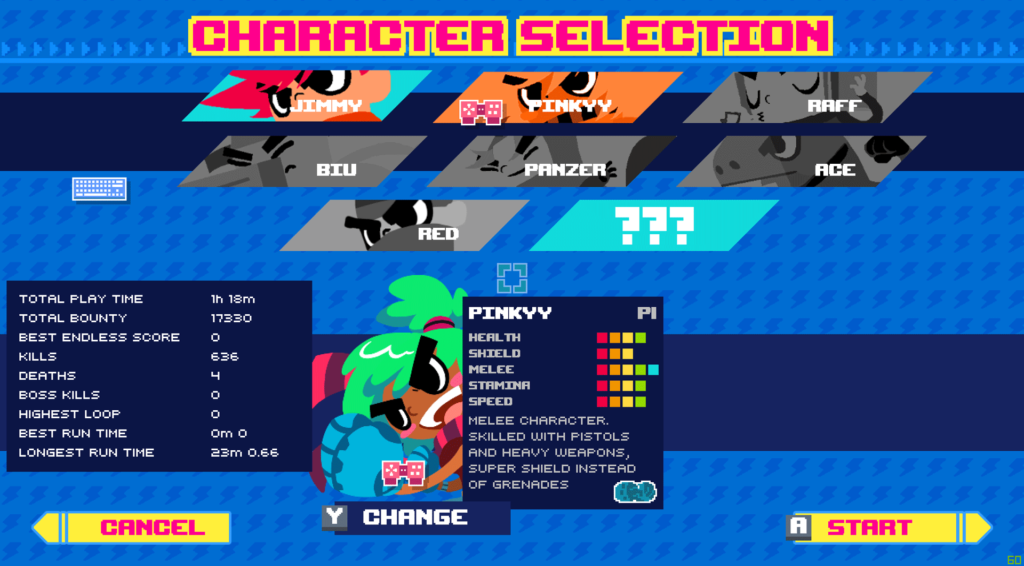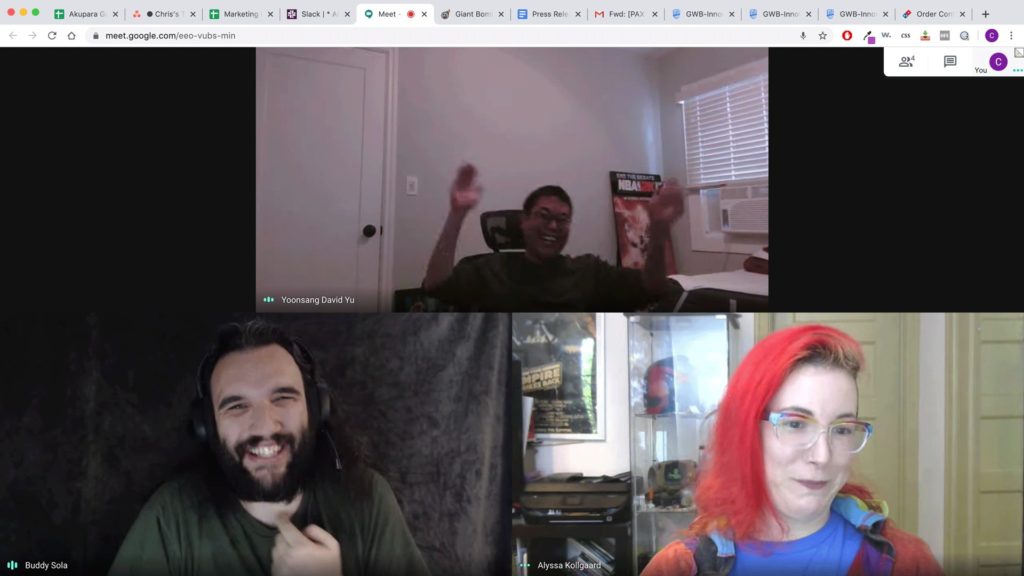Akupara Games is a fully remote video game developer and publisher operating mainly out of Los Angeles, California. My name is Alyssa Kollgaard and I am Akupara’s main producer across all of our development, marketing and publishing efforts. We have been successfully shipping products for over three years across a multitude of genres, engines (Unity, Unreal 4 and GameMaker), team sizes and make-ups (development, co-development, work for hire, marketing and publishing) – all while working exclusively from home.
As companies seek to practice social distancing and establish work from home routines in the wake of COVID-19 shut downs, we wanted to share some of the best practices that have allowed us to be successful while working remotely.
Tips for Employees
Working remotely isn’t just new for many companies but for many employees as well. Honestly, not everyone is suited to this type of arrangement; some of us function much more efficiently in the physical presence of our peers. We thrive on the collaboration, the friendship, the routine, the structure, the accountability, and the communication that being in a shared space naturally encourages. For many people, the loss of proximity creates an entirely new challenge to overcome – on top of having to deal with navigating the anxiety of an international crisis.
Being successful while working remotely doesn’t just fall upon the shoulders of management, however. It requires buy-in from everyone involved in order to function with efficacy. If this will be your first time working from home, here are some best practices to get you started.
That being said, some of us find working remotely to be even more effective – and you may be surprised how much more you get done if you stick to these guidelines.

Alyssa Kollgaard and her favorite coworker
Establish and maintain routine
It is really easy to fall into the trap of thinking of this as a staycation of sorts. It is important, however, to resist the urge to roll out of bed and do your job in your pajamas, or with no pants on, or unshowered, or any number of other things you would never do in an office environment. On the surface it seems like this may be a benefit to working from home – but this can quickly snowball into other aspects of your job or your life.
Set expectations upon yourself and stick to them the same way you would normally. If your morning starts by stretching, drinking a cup of coffee, going for a run, listening to music, eating breakfast – great! Continue to do all of that. If you normally stop by Starbucks and want to avoid public places, try to find substitutions for the experience that can be done at home (pick up a bag of Starbucks coffee and prepare it for yourself each morning). A lot of things are going to be very different now that you are working from home, and it’s important that you maintain the aspects of your original routine that are within your control. Psychologically, this will get you in the mindspace to do a job, even if your working environment is now your home. Do your best to avoid triggers that lead to depression.
Your home is where your leisure time is spent – your pets and hobbies are here, you have your own list of things to do around the house. There are a lot of distractions that don’t exist at an office, and you are incumbent upon yourself to stay on target. You don’t have anyone watching over your shoulder to make sure you are staying on track, so this is now entirely your responsibility.
Try to keep the same timing you would at work – your start time, your breaks, your lunch, and your endtime – so that this becomes second nature to you, and your coworkers can reliably work around your availability.
Set boundaries and expectations
The other half of routine is boundaries. These are important in many different contexts. If you know you are prone to mindlessly scrolling social media, there are several apps that can help you monitor yourself or limit usage. Limit outside distractions as much as possible.
If you live with other people, make sure that they respect that this is now your office. Ask them not to bother you during established work hours. Lock your doors and put on headphones if you have to.
If you are a parent impacted by school closures, this becomes more challenging – work with your partner or fellow caretakers to set expectations and allow for uninterrupted working hours. Make sure your employer has visibility into your situation so that they can work with you to be effective. This may mean splitting your work days, or working on weekends when you have someone else available to wrangle children, or establishing a nanny-share situation, or any number of other things that are unique to your specific situation. Open communication is important so that we can try to accommodate families during uncertain times.
Likewise, it’s important to be honest about when you think you won’t be able to hit deadlines you have committed to. We’re all figuring this out together, but it’s harder to make it work if we don’t have all the information to make an informed plan. This is impacting companies globally right now, and lots of balls are going to be dropped – just be sure you communicate when this is going to happen early and often, so that people who are relying on you can adjust accordingly.
It’s equally important to set boundaries with your employer. Let them know what hours you are available for work, and turn off notifications during the hours you have set as being unavailable. Keep in mind that work will oftentimes happen asynchronously, as other people in your organization need to account for this new routine as well. Emails and messages will likely come to you at all hours of the day, so be sure you have clearly defined “on” and “off” hours. It’s very easy for work life to bleed into home life otherwise.
“I think one of the things people who start working from home can sometimes face is a sense of guilt when they’re not working. Without any kind of hard barrier between ‘being at work,’ and being at home, the line can get fuzzy and it’s easy to fall into the trap of thinking that because there’s still work that needs to be done, you’re doing something wrong by taking time for yourself. This is why routines and boundaries are so important.
For many people, this can mean letting the clock be the boss – have a clear starting time and a clear ending time, just as you would if you were in a physical office, and use that time.
I’ve found that people work from home most effectively when there are concrete deliverables and deadlines. It feels good to keep a promise and deliver something you’re proud of when you said you’d have it done. When people drift, I find it’s most often because they’re not really quite certain of what they’re doing, or the task they’re working on is so vague or unattainable that it never really feels like progress is being made. It’s valuable to break big jobs into smaller tasks – not just to make organization and tracking easier, but also because completing each of those small concrete tasks is a tangible thing that makes progress feel real.” – Kevin Mack, COO remote VR company Manic Machine Games

Ludicrous Speed by Manic Machine Games
Along those lines…
Honor your work space and your living space
This one is one of the most important tips, while also being one of the most challenging depending on the kind of space you inhabit. Having distinct areas for “work” and for “home” is an important tool for compartmentalizing. Try to establish a single area as your “office” – whether it be your desk, or your laptop in a specific part of your house, or a room (if you’re lucky). Don’t make your workspace somewhere that is essential to your relaxation routine, your sleep or your health – don’t work on your laptop from your bed, for example. This needs to remain a place of sanctity.
Even if your space is limited to a bedroom, do what you can to dedicate an area of the room as “work”, and the rest as “home”. It becomes very difficult to turn off work mode and maintain normalcy if there are not distinct physical boundaries between them. Make sure that anyone you live with also respects this area as your work space.
Tips for Companies
A lot of my recommendations here are through the lens of a producer with an Agile/Scrum approach. Many of the practices in this project management style work just as well remotely as they do in person; it’s just a matter of adjusting them slightly for the new circumstances. Take these as generalized best practices and adjust according to your needs. Also, keep in mind that it’s likely you aren’t going to nail it the first time – give it a week or two and if you are finding something ineffective, feel free to adjust (that’s the beauty of the Agile/Scrum methodology).
It is important for you to establish expectations and guidelines while still being flexible enough to accommodate your employees individual needs. Communication is more important now than ever before. Provide a foundation that allows for your employees to be effective in their roles, but be sure that you are likewise being empathetic and understanding during this transition and the uncertainty it brings.
Standups and Meetings
Standups are absolutely essential to success! Be sure that you are checking in with everyone early in the day. Standups should happen at the same time every day and all team members with adjacent tasks should be expected to participate. Standups can happen on a video call or a chat program of your choice (but should happen in real time as much as possible, not asynchronously, so that priorities can adjust if needed). These can be company wide, project wide, or discipline specific – up to you how you arrange them. Just be sure that any information that comes out of these standups is relayed to the people who need it.
Generally, standups should follow this format:
- What I have done since last time
- What I am working on today
- Where I expect to be by EOD
- Any blockers
The purpose of this practice is to set priorities and expectations, maintain visibility and keep communication open, establish routine, work toward common goals, and course correct early on. If someone is working on the wrong thing, you’ll know before they go too far down the wrong path. If someone is blocked, you can begin to address it. If someone is working from incorrect information, or needs help prioritizing their tasks, this is the time to do it as well.
Regardless of team size, I recommend doing this daily – it helps maintain contact between coworkers, with accountability, and it answers questions that would naturally come up over the course of a physical workday. We do our standups on Slack in a specific standup channel to keep it visible and clean, but they can happen on Discord, GoogleMeet or Skype as well.
“At Rogue Snail, we have fortnightly ‘Sprint Achievements’ meetings with the entire studio, in which each one of our three internal teams show what they have achieved in the last couple of weeks.
We have a virtual ‘happy hour’ too! We schedule it once a month to gather the team and play some party games online. Everybody gets a voucher for delivery food. Our happy hours are a lot of fun and we consider them essential to creating human connection between us, and to not limit our relationship to work only.
The producers meet every 2 weeks with each member of their team. It is a one-hour session and the team members guide the conversation. The goal is to get close to them, not asking about tasks, but about larger aspects – life, how they feel about work, how we can improve things. Our first priority is treating our team as people first, workers second.
Every 6 months, we do a company-wide feedback process. We take the entire day off of regular work so we can focus on just the Feedback. Everyone has to answer 3 questions about everyone else: their qualities, suggestions to improve, and extra comments. The whole team submits their answers anonymously using Google Forms, and the answers go directly to the person. This way, we guarantee that only you can read feedback written about yourself.” – Eliana Dib, producer at fully remote studio Rogue Snail Games.

Relic Hunters Zero: Remix, co-developed by Akupara Games and Rogue Snail
Online task tracking
There are A TON of good free and low cost tools out there for tracking tasks. This one is very dependent on the size of team, style of management, type of workflow and how big your backlog is. If you are already working with a project management software, it’s likely you already have a relationship with their web and/or mobile app (it’s always worth it to grab the mobile version of these apps, in my opinion). Even if you don’t work from home, I stress the importance and helpfulness of these programs when working in game development. Shared GoogleDocs or spreadsheets or ad hoc methodology just don’t compare, even if you’re a one-person team.
If you’re interested in specific program recommendations, I have a list compiled at the bottom of this article.
Online chat programs
It’s likely that you are already using an online chat program at your office. These tools are essential not only for getting work done, but also for maintaining some brevity in the face of crisis. I recommend setting up a couple casual channels to function as digital watercoolers – it will help ease tension and maintain co-worker relationships. Chat programs become even more crucial when you remove the ability to ask questions and discuss plans in person. This should serve as your main source of quick communication – just be sure that any decisions that are made in one on one conversations are immediately relayed to any other team members that need to know.
Online meeting tools
Video calls will allow a semblance of normalcy in your work day. It feels a lot more like working in an office when you still get the opportunity to see the faces of the people you are working with. Sure, some people will turn off their cameras, but video calls make working from home less like working in isolation. Recommended programs are Skype or GoogleMeet, potentially used in combination with Calendly to schedule calls with clients effectively. It will allow people to request time-slots you have marked as available, helping streamline the process of setting up meetings rather than back and forth emailing.

An Akupara Games meeting in Google Meet
Maintain your work digitally
Most game developers are already using programs like Bitbucket, Github or Perforce to manage submits and builds. The biggest change when working remotely is to ensure that you are committing your work often and letting people know when changes are coming, something is expected to break, or when you are working on a specific part of a project. It’s a lot easier to stomp over someone’s work when you are both working remotely, so just be sure you maintain good habits when it comes to repositories and are more vocal about when you are working and what you are doing in them.
Additionally, it’s nice to set up a shared cloud storage through a service like GoogleDrive so that you can ensure you have backup copies of all of your work.
Breathe! You got this.
I know this all undoubtedly feels alien and daunting, but it’s absolutely doable. Just don’t forget to wash your hands, and if you like, follow Akupara Games on Twitter, Facebook, Instagram or join our Discord.
Work From Home Program Round-Up
Here are some programs you may find useful while working from home.
Trello – Trello is a pretty straightforward tool that is useful both for internal development as well as community facing progress reports (if you are the type of developer that likes to give your playerbase insight into development – I personally like Dauntless’ public roadmap).
Asana – Asana is a free database/project management system. It’s a lot more robust than Trello as far as functionality, although some of the higher level functionality is still locked behind a paywall (like some report generation and task dependencies).
Breeze – It’s a good mix of visual and textual, and a better mix of project management board and database than Trello, but not as commonly used. Preferred by art types.
Monday – A lot of manufacturing, fabrication companies use this while digital companies tend to be more aligned to Trello or Asana since this is mainly list-based.
To Do – To Do is usually used in combination with one of the task tracking programs above. This is best used for a lot of little tasks that come up and can’t be immediately addressed but you don’t want to forget. Things like “Don’t forget to email client X” or “Schedule meeting with animation department” go here as your daily checklist. Additionally, it’s great to set up recurring tasks here as reminders (which is much harder to do in project management software or database tools).
Remo – Remo is a visual, top-down view, 2D virtual studio. The app uses video, whiteboard, audio and chat to allow people within the space to interact in real-time. It’s perfect for immediate communication with someone in the same room: one click and you’re in a video call! It also solves the issue of online presence – you can easily tell if someone is at their desk, or if they are busy and should not be interrupted. – Eliana Dibs, Rogue Snail
Zoom – Meetings, visual conference rooms, phone calls, business messaging. This is being utilized most heavily by those in education and service facing industries. It keeps video meetings a bit more orderly by allowing attendees to raise their hands and be chosen to speak by the meeting’s facilitator.
Microsoft Teams – Microsoft Teams is a hub for teamwork in Office 365. Keep all your team’s chats, meetings, files, and apps together in one place
Notion – We also use the Notion for the documentation from our backend code and share javascript scripts running on the GameSparks server. – Eliana Dibs, Rogue Snail
Slack – Slack has a ton of good hidden functionality, but one of the most helpful ones is the /remind function – this helps you to work asynchronously with your team. If you know someone is going to be working different hours than you, then you can set up a reminder to ping them about a task by typing /remind @username tomorrow at 9am Thing you want to remind them about. There is a lot of additional functionality in the /remind function that you can see if you try it out in Slack.
The /poll function is also very useful when it comes to setting up meetings and determining team availability, or for coming to decisions about design questions.
If you open up a message to yourself you can use this as an extra checklist of reminders. When things come across my plate that I don’t want to forget about but can’t immediately address, I’ll sometimes drop a message to myself as a reminder and delete messages as I accomplish the associated task.
Slack also embeds directly into many of the project management programs like Trello and Asana so that you can get updates posted directly by Slackbot into your channels. This is usually only helpful to smaller teams, as it can create a lot of unnecessary noise to track.
Slack also ties directly into GoogleDrive, so if you maintain your shared files here, it is super easy to share them and even adjust permissions directly in Slack.
Discord – Discord is a great tool, especially for developers that are heavily community facing. They have integrated voice and streaming functionality that works well for both internal and external communication and it’s the best tool for curating and growing your audience. Skullbot Games is excellent at using Discord to monitor their community for reported issues, collecting feedback to translate into tasks and keeping all their development transparent.
It’s easy to create private channels with different permission settings to keep certain channels internal only. Really, my only issue with using Discord for both work and community management is that it can sometimes be difficult to parse which messages are work-specific and which are banter. I tend to ignore notifications on Discord compared to Slack because a lot of it is just chatter, which can result in missing some of the important stuff.
